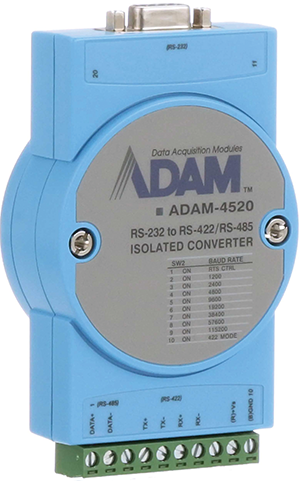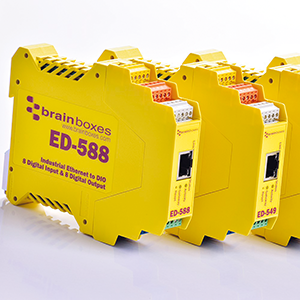
The benefits that can be derived from Industry 4.0 adoption are widely understood, and through this adoption, it will be possible to transform the way in which factory production lines, processing plants and warehouse operations function daily. In many cases, however, the financial outlay involved is likely to prove problematic. Companies looking to employ such technology will need to do so while keeping the related expenditure to a minimum.
According to Statista, the worldwide industrial automation market is going to experience substantial growth over the coming years. Having already generated more than $175 billion in revenue during 2020, it is expected to hit the $265 billion mark by 2025, which equates to a 9% compound annual growth rate (CAGR) over that period. Fortune Business Insights predicts that this 9% CAGR will remain beyond that timeframe, resulting in a total annual worth surpassing $355 billion by 2028.
Advantages of Industry 4.0 and cost implications
Through widespread implementation of Industry 4.0, elevated levels of efficiency will lead to better use of assets and increased output. This in turn will mean that orders can be fulfilled quicker to keep pace with customers’ demands. In addition, it will be possible to improve product quality and reduce wastage.
Another aspect of Industry 4.0 that is going to be pivotal is the ability to continuously monitor the key parameters of different items of machinery. This will allow any issues affecting overall performance to be investigated and addressed accordingly. It will also support predictive maintenance activities, allowing any component parts that are in need of replacement to be identified before causing costly interruptions in production workflows.
It must be acknowledged, however, that industrial equipment will remain in service for protracted periods of time. Large-scale investments that have already been made will mean that such equipment cannot be replaced within a short timeframe. The question therefore is how to get the most out of Industry 4.0 while keeping the associated costs down.
Before embarking on migration to a smart factory, the cost implications will need to be fully understood. In situations where there is only limited available budget to fund this work, companies will need an alternative to wholesale replacement of existing machinery. Companies must therefore look for a viable upgrade path for existing machinery.
Modernising connectivity infrastructure
At the foundation of any industrial automation system must be fully effective connectivity. It is through this that all the data will be captured in order for constituent machinery and processes to be monitored, analysis to be undertaken, and improvements proposed. This connectivity will also be used to execute any necessary actions. If it is to work optimally, then a single platform where all equipment is using the same communication protocol, will be desirable.
Communication can be of either a vertical or a horizontal nature. Vertical communication relies on two-way (duplex) data transmissions between different pieces of equipment and the company’s operation management system. Horizontal communication goes further than this, and generally means that acquired data will be uploaded to the cloud, enabling authorised personnel to access it remotely. This data can then be used to study trends or search for any anomalies that might have a lasting detrimental effect on the industrial site’s operations.
Equipment that has already been in operation for a long period will often be dependent on the use of various fieldbus protocols, many of which may be decades-old. This presents challenges when they need to interface with back-office enterprise or cloud infrastructure that has been deployed far more recently. If such legacy machinery is to be made compatible with modern industrial automation requirements, it will call for retrofitting of connectivity solutions.

Connectivity solutions and the attributes needed
Any hardware that is intended to bring next-generation connectivity to legacy industrial equipment or instrumentation must be straightforward to install. Space constraints may also need to be considered. Likewise, it is paramount that this hardware be aligned with the application environment into which it is being placed. It will need to exhibit the robustness necessary for it to cope with the uncompromising environments of even the most taxing industrial applications. Extreme temperatures, shock and vibrations, as well as the threat of electro-static discharge (ESD) and potential liquid ingress must all be safeguarded against.
Enabling convenient communication between items of equipment supporting different serial interface standards, the Advantech ADAM-4520-F is an RS-232 to RS-422/RS-485 converter module capable of delivering 115,2 kbps data rates. By interfacing one of these modules to industrial equipment that has only an RS-232 interface, it is possible to convert the RS-232 communication signals into isolated RS-422 or RS-485 signals. Through its use, communication distances of up to 1200 m can be supported and as many as 32 different nodes connected. There is no need to change any of the software, thereby facilitating the upgrade process. As well as having 3 kV galvanic isolation, the ADAM-4520-F has a built-in surge protection mechanism and an operational temperature range of -10 to 70°C. Supplied in a compact ABS enclosure with dimensions of

Supporting the Modbus TCP protocol, the Brainboxes ED-588 Ethernet gateway allows existing industrial equipment to interact with a company’s enterprise infrastructure. It offers a robust and intelligent ‘control side’ device that provides the interface to systems on the factory floor or ‘process side’. It has eight non-isolated digital input and eight non-isolated digital output channels. The Ethernet port enables data to be transferred at 100 Mbps. This DIN rail-mounted unit is supplied in a compact form factor and with dimensions of
Conclusion
For a large proportion of industrial operations, there is still a major disjoint between what happens on the factory floor and what takes place at the higher levels. If the advantages of embracing higher degrees of automation are to be fully leveraged, then this disparity needs to change. Through retrofit options, the route towards Industry 4.0 does not actually need to be that complicated or expensive. Through the use of industrial converter modules and smart sensor plug-ins supplied by TME, it is possible to upgrade longstanding industrial operations, thereby moving them into the next industrial era.

© Technews Publishing (Pty) Ltd | All Rights Reserved